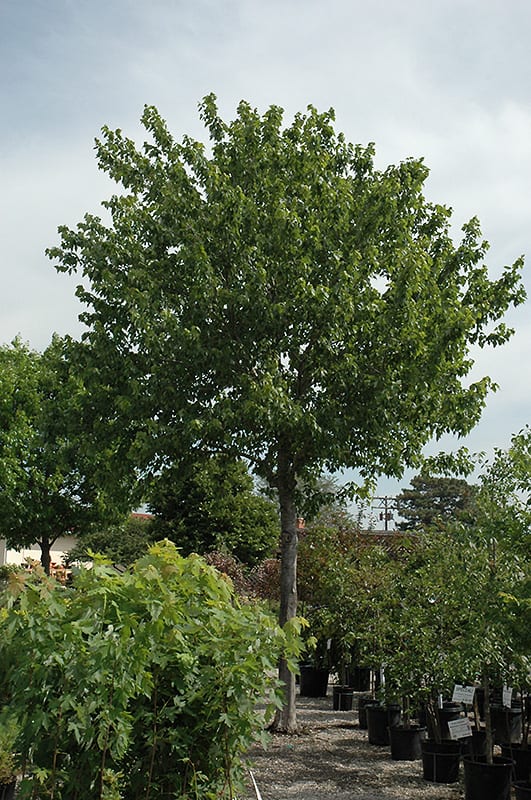Images provided by NetPS Plant Finder Tool
Summer Red Red Maple
An outstanding shade tree with burgundy red new foliage that matures to dark purplish green; in autumn, older leaves turn yellow while younger ones turn orange or purple; a dense broad tree that provides welcome summer shade.
Please contact your local store for product availability.
Find a garden center near you.
Species: rubrum
Other Species Names: Swamp Maple, Scarlet Maple
Plant Height: 480 in.
Spread: 300 in.
Evergreen: No
Plant Form: round
Emergent Foliage Color: burgundy
Summer Foliage Color: dark green
Minimum Sunlight: full sun
Maximum Sunlight: full sun
Summer Red Red Maple has dark green foliage which emerges burgundy in spring. The lobed leaves turn an outstanding yellow in the fall. Neither the flowers nor the fruit are ornamentally significant. The furrowed silver bark and brick red branches add an interesting dimension to the landscape.
Summer Red Red Maple is a deciduous tree with a more or less rounded form. Its average texture blends into the landscape, but can be balanced by one or two finer or coarser trees or shrubs for an effective composition.This is a relatively low maintenance tree, and should only be pruned in summer after the leaves have fully developed, as it may 'bleed' sap if pruned in late winter or early spring. It has no significant negative characteristics.Summer Red Red Maple is recommended for the following landscape applications;AccentShade
Summer Red Red Maple will grow to be about 40 feet tall at maturity, with a spread of 25 feet. It has a high canopy with a typical clearance of 7 feet from the ground, and should not be planted underneath power lines. As it matures, the lower branches of this tree can be strategically removed to create a high enough canopy to support unobstructed human traffic underneath. It grows at a fast rate, and under ideal conditions can be expected to live for 80 years or more.This tree should only be grown in full sunlight. It is quite adaptable, prefering to grow in average to wet conditions, and will even tolerate some standing water. It is not particular as to soil type, but has a definite preference for acidic soils, and is subject to chlorosis (yellowing) of the leaves in alkaline soils. It is somewhat tolerant of urban pollution. This is a selection of a native North American species.
